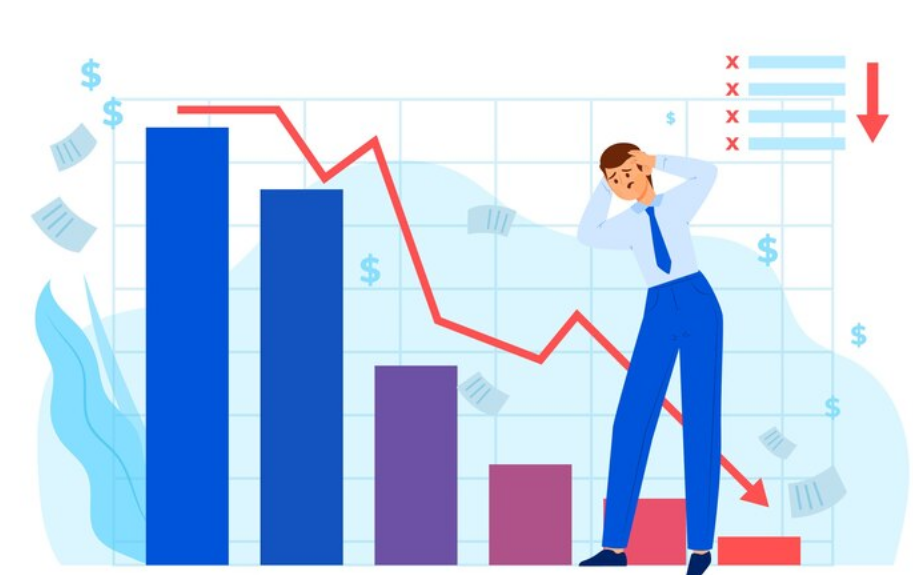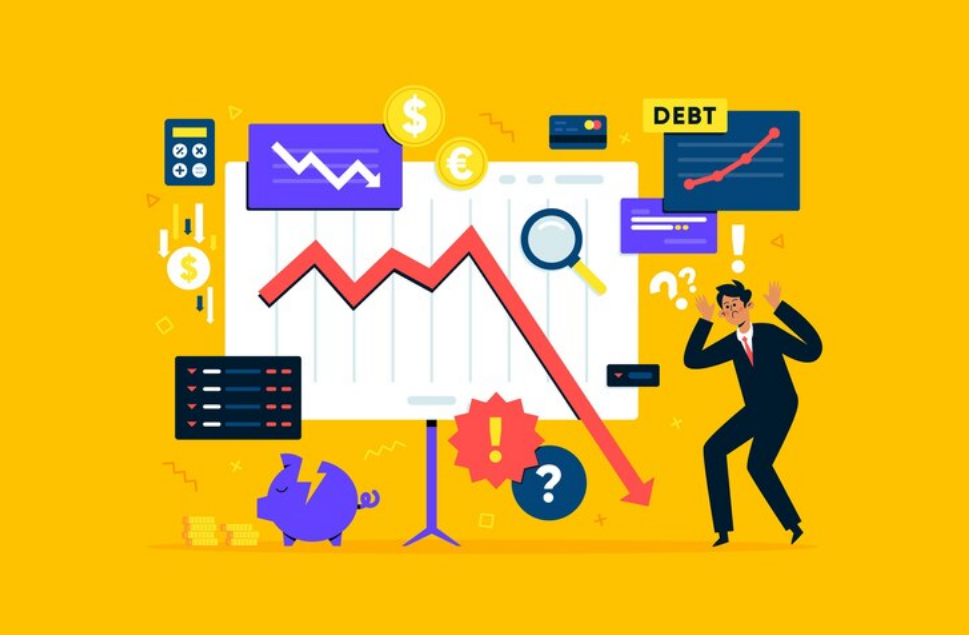The Psychological Aspect in Cryptocurrency Trading: Why Is Mindset So Important?

Reprinted from panewslab
12/22/2024·5MAuthor: Abdulafeez Olaitan
Translation: vernacular blockchain
In cryptocurrency trading, psychological gates have a profound impact on market behavior, and they influence everything from price movements to trading decisions. In fact, research shows that more than 70% of traders tend to place large buy or sell orders near round-number levels such as $10,000 or $50,000, creating strong support and resistance zones.
These psychological gates reflect collective emotions and are the convergence points of fear, greed, and hope that drive market trends. Understanding how these gates impact the cryptocurrency market can help you gain a strategic advantage in predicting price changes and optimizing your trading strategies.
Key takeaways
Psychological levels are key price points, usually round numbers, that act as important support and resistance areas in cryptocurrency trading.
Traders tend to exhibit emotional reactions when approaching psychological thresholds, which can lead to increased volatility.
Successful trading around psychological thresholds requires a combination of technical analysis and fundamental factors to improve trading results.
Institutional traders and market makers often use psychological gates to manipulate price movements.
1. Psychological Price Points in Cryptocurrency Trading

- Psychological price point
Psychological price points, also called psychological gates, are price points in financial markets (especially cryptocurrency trading) where traders' behavior is significantly affected by emotions, cognition, and collective psychology.
These gates typically correspond to round numbers or milestone prices, such as $10,000 or $50,000, and these natural barriers attract significant market activity.
Round numbers such as $100, $1,000, or $10,000 are considered psychological gateways because they are noticeable and easy to remember. These numbers become important reference points at which market participants are more likely to enter or exit trades, creating strong support or resistance.
- Example of key integer price:
Bitcoin (BTC): $10,000, $20,000, $50,000
Ethereum (ETH): $1,000, $2,000, $5,000
Ripple (XRP): $0.50, $1.00, $1.50
Litecoin (LTC): $100, $200, $300
Round-number prices have psychological appeal because they simplify trading decisions, and both novice traders and experienced investors tend to rely on these points. These price points become psychological anchors where large volumes typically accumulate.
Psychological gates reflect collective market sentiment and become self-fulfilling prophecies as more and more traders place orders at these levels. Due to the simplicity of round number prices, traders tend to rely too much on them, making them an important psychological barrier.
The market's response to psychological thresholds is driven by sentiment, creating cyclical buying and selling behavior around these price points. The trader's perception of value, fear of loss, and desire for profit further amplify the importance of psychological gates.
The herding effect is also a major factor affecting the psychological threshold, that is, traders tend to follow the behavior of the majority. Especially around key psychological levels, when a large number of traders anticipate a price reversal or breakout, others will follow suit, accelerating price movements.
Emotions such as fear and greed play a key role in market behavior near psychological thresholds. Fear can lead traders to sell prematurely near psychological resistance, while greed can prompt traders to buy high near psychological support, which often triggers exaggerated market reactions in these key areas.
"Psychological price points are more than just numbers; they embody the collective sentiment of traders and often serve as key points for market reversals or breakouts."

2. How Psychological Price Points Impact Cryptocurrency Markets
Here’s how psychological gates affect the cryptocurrency market:
- Key support and resistance areas
Psychological price points often coincide with key support and resistance areas in the cryptocurrency market. In these areas, prices tend to stall or reverse as market participants make trading decisions based on round-number prices.
Support is the price point where buying pressure is sufficient to prevent further price declines. Psychological levels like $10,000 for Bitcoin or $1,000 for Ethereum often naturally act as support levels. As prices approach these levels, traders anticipate more buying activity, believing that prices are unlikely to fall below this point.
Resistance is the price point where selling pressure is sufficient to prevent further price increases. Psychological levels like Bitcoin’s $20,000 or $50,000 often serve as resistance levels. You may find that the price encounters resistance when it breaks through these levels, as many people choose to sell at these round numbers in anticipation that the price may reverse.
Related Reading: [How Crypto Investing Affects Your Mental State]
- The phenomenon of price aggregation near the psychological threshold
The phenomenon of price agglomeration refers to market prices fluctuating around certain psychological thresholds for long periods of time. This behavior reflects traders’ collective focus on round-number prices, with many placing buy or sell orders around these points.
Market reactions around psychological price points are often quick and violent. When prices approach psychological levels, trading volume typically surges as traders rush to buy or sell. This reaction can trigger short-term volatility, with prices changing rapidly to match market sentiment.
Volatility tends to rise near psychological thresholds due to increased market activity. Traders tend to place large orders at these round-number prices, which can cause prices to move rapidly. When prices break or fall below psychological thresholds, changes in market sentiment can trigger greater volatility, and traders tend to react emotionally to these changes.
- Liquidity and trading volume at psychological gates
Psychological price points often gather large amounts of liquidity and volume, and when prices approach or break through these levels, the market tends to experience significant volatility. Your actions at these points can significantly affect price movements.
The order book often shows a clustering of buy or sell orders near psychological levels. Large orders often pile up above and below round prices, reflecting the consensus that the market reacts strongly to these points. This accumulation of orders affects the depth and liquidity of the order book, causing rapid price movements when these levels are tested.
The psychology of traders directly affects the liquidity of psychological gates. When you become emotionally attached to certain price points, you tend to place larger orders around those levels, thereby increasing liquidity. However, when these levels are breached quickly, a liquidity gap can result -buyers or sellers suddenly withdraw, triggering a sharp rise or fall in prices.
“Traders’ emotional reactions around psychological thresholds can trigger significant moves, so understanding how market sentiment affects price movements is critical for traders.”
3. Trading strategies around psychological price points

Here are some strategies for trading around psychological gates:
- Support and resistance trading strategy
Support and resistance strategies are a common way to trade around psychological levels. With these strategies, you can identify potential price reversals or continuations to enter and exit the market more efficiently.
Psychological levels can be used to determine buying and selling points. For example, $10,000 for Bitcoin or $1,000 for Ethereum is typically support (the area where the price stops falling) or resistance (the area where the price has difficulty rising). The following are the specific operations:
Buy: Buy near a psychological support level when price is expected to rebound from that level.
Sell: Sell near a psychological resistance level when price is expected to fall back or stall at that level.
By strategically placing stop-loss and take-profit orders, you can better manage your risk and lock in profits:
Stop loss setting: Set your stop loss slightly below the psychological support level or slightly above the resistance level. This helps avoid losses due to false breakouts while preventing premature exits from trades.
Take Profit Placement: Place your take profit order slightly below psychological resistance to lock in profits before a potential reversal or stagnation.
- Use psychological price points for trend trading
In trend trading, psychological gates can be combined with trend lines and technical analysis to enhance trading strategies. These levels are often key points where trends stall or accelerate.
When strong trends align with psychological levels, these areas can serve as additional confirmation signals:
Uptrend: Watch for price rebounds from psychological support levels to confirm the continuation of the trend.
Downtrend: In a downtrend, psychological resistance levels often indicate that sellers may re-enter the market.
Breakthroughs and false breakouts are important concepts in trend trading:
Trading Breakouts: Entering a trade when price breaks strongly through a psychological barrier, indicating that the trend may continue.
Managing false breakouts: Beware of false breakouts near psychological thresholds by waiting for increased volume or confirmation of longer K-line patterns. These are often triggered by emotional trading.
- Risk management strategy
Trading around psychological thresholds can be volatile, so risk management is crucial. Risk exposure can be reduced by adopting sound strategies.
Psychological thresholds can be used as benchmarks for risk control:
Support level risk control: When buying near psychological support levels, you can set your stop loss below this level, thereby reducing the risk of unexpected market fluctuations.
Resistance level risk control: Selling or going short near psychological resistance levels reduces risk exposure in the event of a price reversal.
Position size management is also very important for controlling overall risk, and psychological thresholds can help define capital allocation ratios:
Larger Positions: When price movements around psychological levels are consistent with the broader trend, consider larger positions to take advantage of a continuation of the trend.
Smaller Positions: In high-volatility or uncertain markets, smaller position sizes should be taken near psychological thresholds to account for unpredictable price movements.
“Combining psychological price points with traditional technical analysis and fundamental insights allows for the construction of a more comprehensive trading strategy that increases the likelihood of success.”
4. Tools for Identifying Psychological Price Points in Cryptocurrency
Charts
Here are some tools to help identify psychological gates in cryptocurrency charts:
- Trading platform and technical indicators
Many trading platforms and technical indicators can help traders easily identify psychological thresholds in cryptocurrency charts, providing visual cues to predict market behavior near these key points.
Most trading platforms (such as TradingView, BN and MetaTrader) allow users to manually mark psychological thresholds on charts. Commonly used drawing tools include:
Horizontal Lines: You can manually draw horizontal lines at key psychological levels such as $1,000, $5,000, or $50,000 so that these support or resistance levels are clearly marked.
Price Alerts: By setting price alerts at psychological thresholds, you can react quickly by receiving notifications when prices approach these important areas.
Some technical indicators are specifically designed to automatically mark rounded numbers or psychological thresholds to provide additional analysis support:
Rounded Number Indicators: These indicators specifically mark common rounded numbers, allowing you to easily identify psychological thresholds without manual intervention.
Pivot Point Indicator: Pivot points often coincide with psychological levels, providing a comprehensive view of technical and psychological support/resistance levels.
- Combine Fibonacci and psychological levels
Fibonacci retracements are a common tool for identifying potential support and resistance points based on historical price movements. Used in conjunction with psychological gates, market behavior can be analyzed more comprehensively.
Fibonacci retracement levels (such as 38.2%, 50%, and 61.8%) are often close to psychological levels, reinforcing the meaning of these levels. For example:
Bitcoin: The 61.8% Fibonacci level could coincide with psychological levels like $30,000, creating stronger support or resistance.
Ethereum: Fibonacci retracement levels near $2,000 may coincide with psychological resistance, further underlining the importance of this price point.
Combining Fibonacci retracement with psychological levels can help you more accurately identify the price levels that the market is paying attention to:
Entry and exit strategies: You can find the best buying and selling opportunities based on whether Fibonacci retracements and psychological levels are consistent. When both point to a certain price at the same time, the market reaction is more likely.
Risk Management: Placing stops where Fibonacci and psychological levels intersect can help to better control risk, as these areas tend to be more liquid and the market reacts more violently.
“Institutional traders often use psychological thresholds to trigger stop-loss orders and create false breakthroughs to mislead unprepared retail traders.”
- Common mistakes when trading psychological gates

5. Common mistakes when trading at psychological price points
Mental gates like rounding numbers can be very useful when trading, but many traders make mistakes that lead to bad decisions. Let’s look at some common mistakes and how to avoid them.
- Overreliance on rounded numbers
Psychological thresholds, such as prices ending in .00 (e.g., $50.00 or $100.00), do influence the market, but overreliance on these rounded numbers can backfire. How to avoid this:
Don't trade based solely on rounded numbers. While rounded numbers may appear to be strong support or resistance levels, prices are often influenced by other factors, such as economic news or technical indicators. For example, if you only focus on $100.00 as a key price level for a stock, you may miss the opportunity for the stock to move in response to new earnings data.
In addition, be wary of false breakthroughs. Let’s say you’re waiting for a stock to break above $50.00, thinking the price will continue to rise, but if you ignore other signals, such as low volume or lack of news, you could fall into the trap of a false breakout – where the price briefly breaks above $50.00 before quickly falling back. This can lead to poorly timed trades and losses.
- Misinterpret market sentiment
Near the psychological threshold, emotions such as fear and greed often affect traders' decisions, leading to impulsive trading. How to stay rational:
Avoid the fear of missing out (FOMO). Let’s say Bitcoin is approaching $30,000 and you decide to buy simply because everyone is talking about it. You are afraid of missing the opportunity for a big rise, but without adequate analysis, you may enter the market at the wrong time. Wait for clear signals, such as price trends or trading volume, before taking action.
Don't panic sell on dips either. If a stock falls below a psychological support level (such as $50.00), many traders will panic sell out of fear that the price will continue to fall. However, the market correction may only be temporary. First analyze the situation and look at the big trends or news to avoid unnecessary losses.
- Ignore market manipulation
Large traders, often referred to as "whales," may manipulate prices near key psychological levels. To avoid falling for these tactics, stay alert and pay attention to these common tips:
Be wary of stop loss hunting. Whales may deliberately drive prices down to critical levels (such as below $100.00) in order to trigger stop-loss orders and force retail investors to sell. The whale can then buy at a lower price. To avoid this, you can place your stop loss orders slightly above or slightly below these significant prices to reduce the chance of being targeted.
Don't believe every breakthrough. Whales or market makers can push the price up to a resistance level (e.g. $50.00), which looks like a breakout, but may actually lead to a quick sell-off after retail traders enter. Before entering a trade, confirm that the breakout signal is reliable, which can be verified by other indicators such as volume spikes or news events.
- Over-trading near psychological thresholds
When prices approach psychological thresholds, it can be easy to tempt traders to overtrade, trying to capture every small move. This causes the following problems:
Chasing small unnecessary profits. Constantly trading when prices are less volatile can lead to high transaction costs and stress. For example, if you buy and sell a stock every time it approaches $100.00, the fees will eat into your profits without any substantial gain.
Missing the larger trend. Focusing too much on small fluctuations around rounded numbers can lead to overlooking larger trends. You may be so focused on the $50.00 stock that you miss the overall upward trend toward $60.00. Keep an eye on long-term patterns.
6. Conclusion
In cryptocurrency trading, psychological gates play an important role in shaping market behavior, often serving as support, resistance, and key points for decision-making. These levels, which often appear as rounded numbers, can have a significant impact on trader sentiment, especially in volatile markets.
7. Frequently Asked Questions
However, while psychological gates can provide valuable insights, you must avoid relying too much on them. Combine with other technical indicators, fundamental analysis and risk management strategies to improve your trading success rate.
-
What are psychological thresholds in cryptocurrency trading? Psychological levels are key price points, often represented as rounded numbers, that traders believe may act as support or resistance. The reason these levels are important is because many market participants tend to place buy or sell orders near these numbers, resulting in an increase in trading activity.
-
How does rounding numbers affect trading decisions in the cryptocurrency market? Rounded numbers are often the focus of trader sentiment. When price approaches these numbers, traders may anticipate a bounce (support level) or reversal (resistance level), which affects their trading decisions, such as entry and exit timing.
-
Why are psychological gates important in cryptocurrency trading? Psychological gates are crucial because they help traders identify areas where price may change direction. They provide insights into market psychology, allowing traders to make more informed decisions based on the expected reactions of other market participants.
-
What is the difference between psychological gates and traditional technical analysis? While traditional technical analysis relies on indicators and chart patterns to identify price movements, psychological gates focus on trends in trader behavior around rounded numbers. Psychological gates reflect collective market sentiment, while traditional analysis is more quantitative.
-
Can psychological thresholds predict cryptocurrency market trends? Can. Psychological gates can indicate underlying trends by highlighting areas of interest for buyers and sellers. However, they are not an infallible tool for predicting market trends, as external factors such as news events and wider market conditions also play a role.

